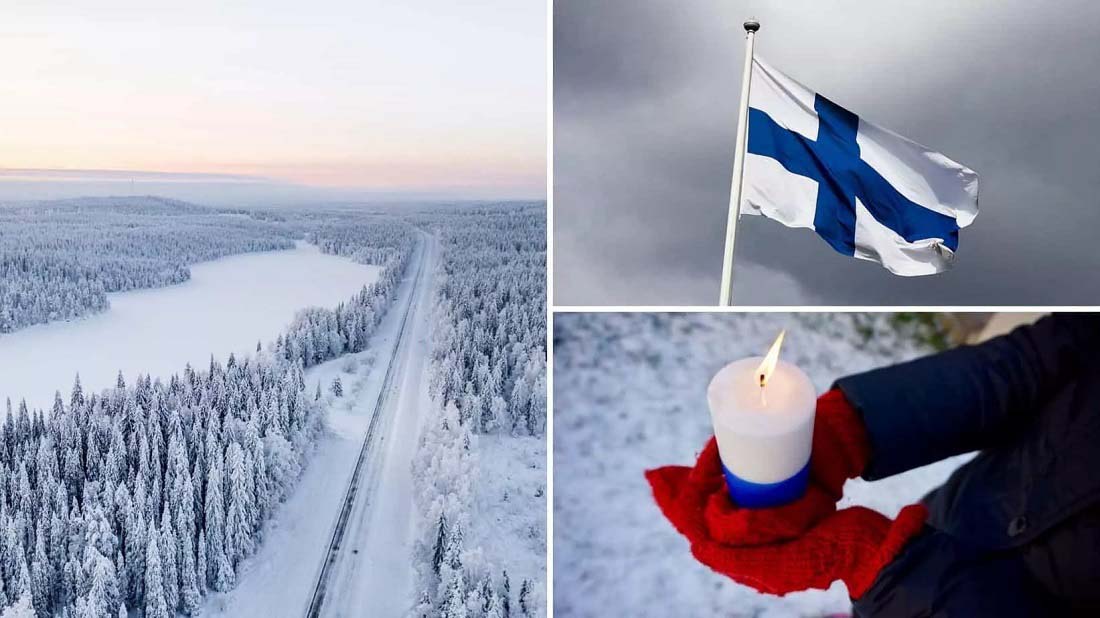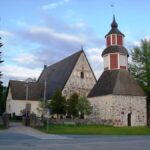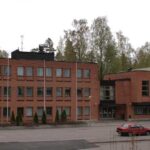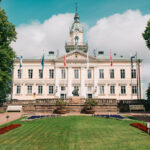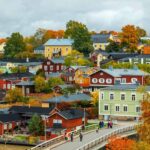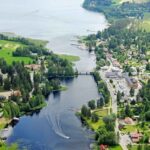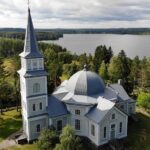In this article, we take a look at one of the most inspiring Finnish celebrations—Finnish Independence Day, celebrated every year on December 6th. Finland gained its independence in 1917. Among the significant aspects of the Independence Day celebration are patriotic speeches, paying respects at memorials for war victims, and specific religious ceremonies. Finns generally have a good spirit on this day and enjoy a meal with family or friends.
A Brief Overview of Finland Independence Day
Before gaining independence, Finland was under Swedish rule for 600 years and then under Russian control for 108 years. The dream of independence began in the late 1890s when Finland began industrializing. In 1906, Finns gained extensive voting rights, and all individuals over 24 in Finland gained the right to vote and run for elections. In 1908, extensive Russian measures in Finland began and continued until 1917. During this period, Russian forces were consistently present in Finland.
With the start of World War I in 1914, Russia increased its forces in Finland. Initially, the war did not have much impact on Finland, but over time, Russia established military rule over the entire country. Nearly during that time, the Finnish parliament began discussing the possibility of Finland’s autonomy or even declaring Finland as an independent country. With the onset of the Russian Revolution in March 1917, an opportunity arose for Finland to achieve its dream.
In the summer of 1917, the Finnish Parliament passed the Power Act with the majority of independence supporters’ votes. With this law, the Parliament received the highest decision-making power in domestic political matters. Defense and foreign policy remained responsibilities of the Russian state. The Russian Provisional Government revoked the Power Act and did not allow Finland to reach its goal. This revocation severely impacted Finland’s hopes for autonomy.
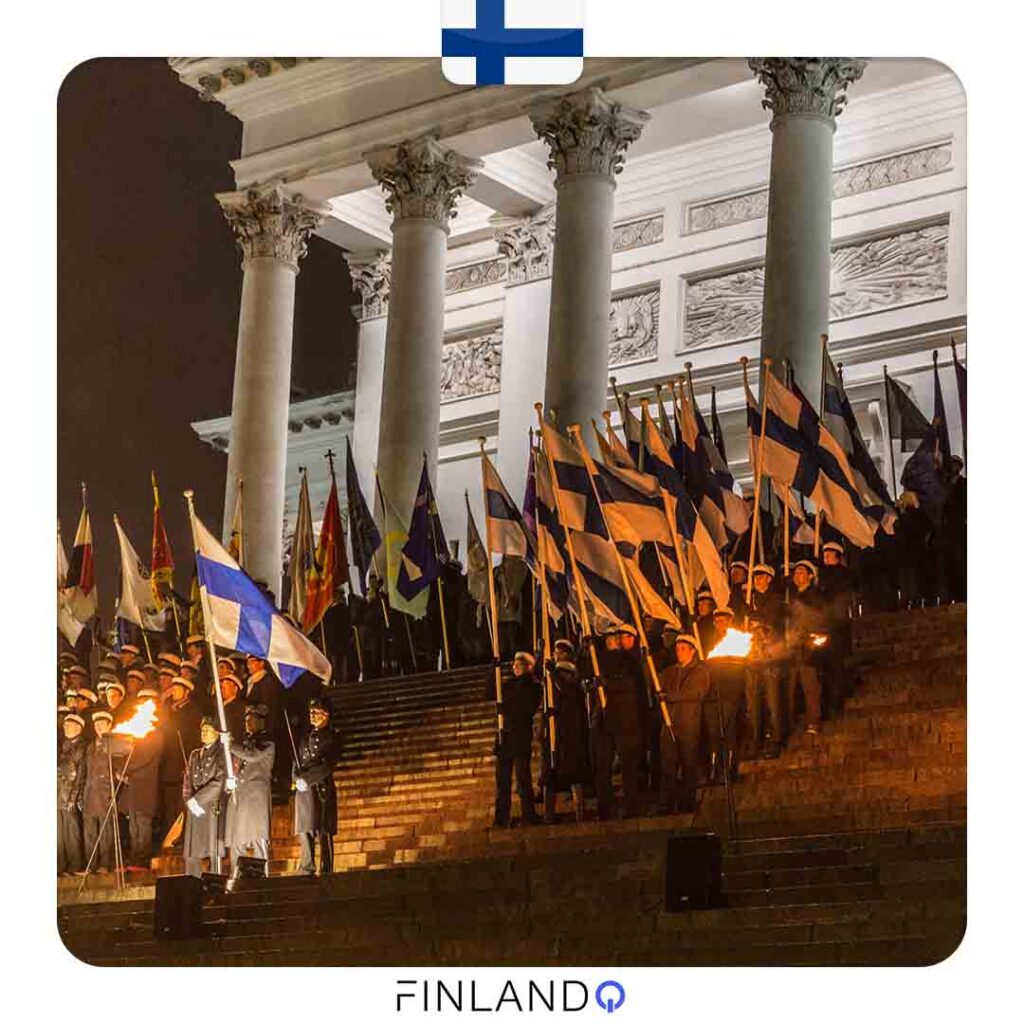
What is Finnish Independence Day?
Until autumn, unrest in Russia increased. Finland decided to ally itself in the next step, thus leaning towards the Bolsheviks. In mid-November, a major strike was organized in Finland. Meanwhile, the power of the Bolsheviks grew in St. Petersburg. On November 15th, a new proposal by the Social Democrats in Finland was approved by 127 votes in favor against 68. This law practically declared independence.
The Parliament took power and removed Russia’s authority in foreign policy and defense. However, unrest in Finland continued due to the presence of Russian soldiers. The first tasks of the government were to declare Finland’s independence and begin implementing it. This government was led by Pehr Evind Svinhufvud.
Finland Independence Day
In 1918, academic gatherings celebrated the first anniversary of the declaration of independence. The following year, on November 20th, 1919, the government designated December 6th as Finnish Independence Day. At the same time, an order was issued for the Finnish flag to be raised in public buildings, and a ceremony was held in churches. This day was also set as a holiday for government offices, schools, and courts.
Government Structure of Finland
Finland’s government structure did not stabilize for several years. This was mainly due to the civil war that began in early 1918. After the Whites’ victory in May 1918, efforts were made to establish a monarchy in Finland. The son of the German emperor was considered the first replacement for kingship, but the emperor did not want to give his son reign over a country that was still so unstable.
Another option for leading Finland was the German Prince Friedrich Karl of Hesse. When Germany was defeated in World War I, this plan fell through. However, the prince managed to be elected as the first king of Finland in October 1918, but he never accepted the position. Prince Friedrich abdicated in December of that year.
In March 1919, the republicans secured the majority in parliament and with that majority rejected the latest proposals for a monarchy. Prime Minister Carl Gustaf Emil Mannerheim announced the new structure of the Finnish republic on July 17th, 1919.
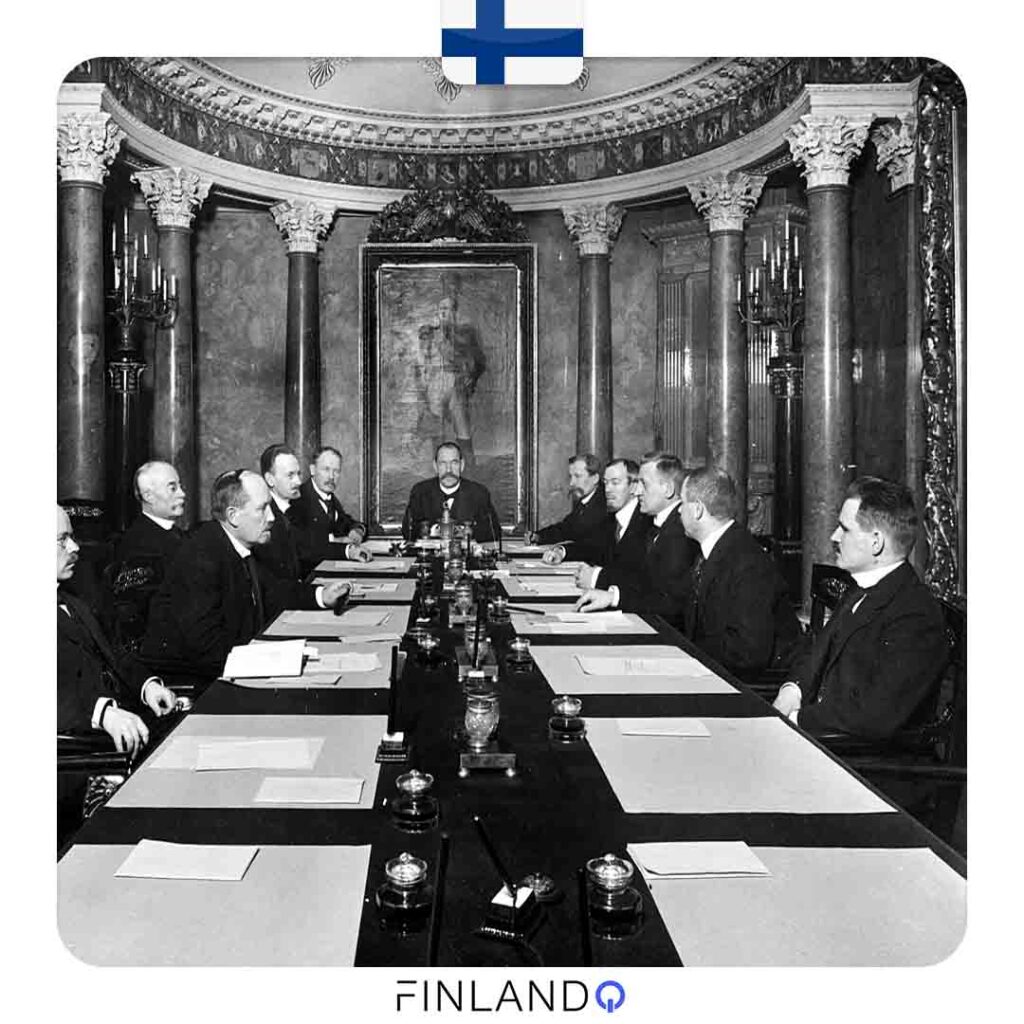
Traditions of Finnish Independence Day
Today, Finnish Independence Day is celebrated by the entire nation. In family gatherings, the day mainly includes visiting cemeteries, lighting candles, and attending Independence Day ceremonies. Helsinki students march from the Hietaniemi cemetery to the Senate Square, where speeches and music take place, wearing traditional white caps and carrying a torch.
On the same day, the President awards several citizens for outstanding achievements, presenting medals and honors. Finns light blue and white candles, and shops are decorated in these colors. Blue and white cakes can be bought in bakeries, and Finnish flags are seen everywhere. Television continuously broadcasts patriotic music and reports on gatherings.
The First Celebration of Finland Independence Day
The first Independence Day celebration was organized by President K.J. Ståhlberg and his daughter Aino on December 6th, 1919. However, this event cannot be called a grand celebration as it was a one-hour gathering in the afternoon. This event was named “Unity Celebration.” About 150 guests were invited to this event, including diplomats, military and government officials, and academics. In the following years, Finnish Independence Day was celebrated on a larger scale, and the number of guests exceeded 1000 people.
Independence Day Parade – Defense Forces
In the early years of independence, especially in the 1920s and 1930s, the Independence Day parade was not particularly well-received. It was in the 1950s and after World War II that the importance of the Independence Day parade increased. This parade includes ground, naval, and air defense forces, border guards, and national defense. Approximately 1300 personnel participate in this parade, and about 50 defense vehicles are present.
On Independence Day, the President awards medals and promotions to defense forces. Various programs are held during the parade, and the public has free access to them. The parade is also broadcast on television for those who are at home to watch.
Student Torch Procession
In several university cities, it is customary to have a torch procession on Independence Day. The origin of this event dates back to 1951 when the first high school student torch procession was organized in Helsinki. Torch processions usually involve visiting the graves of heroes and singing patriotic hymns. In Helsinki, the torch procession passes by the Presidential Palace, and the President welcomes the procession from the balcony of the Presidential Palace.
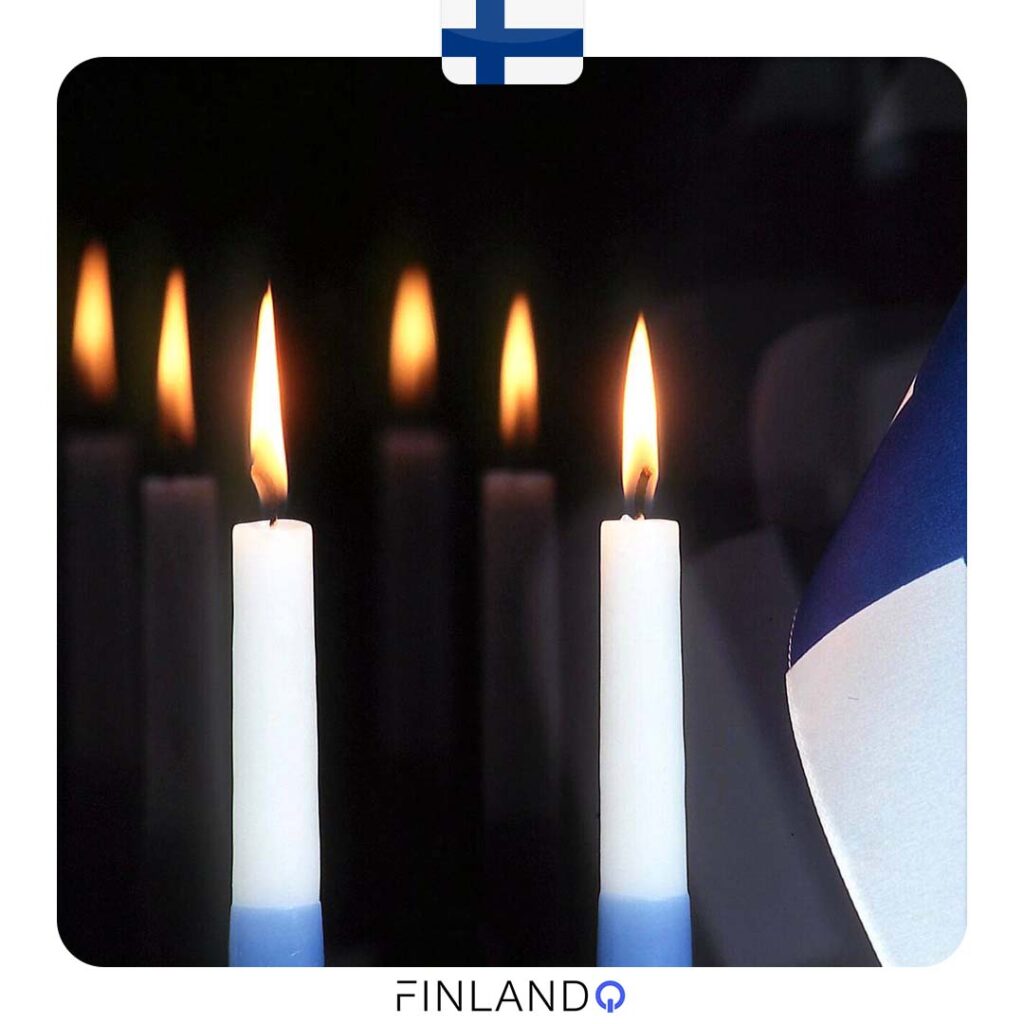
Lighting a candle, the symbol of Finnish Independence Day
On Finnish Independence Day, it is customary for people to light two blue and white candles on their windowsills. The origin of this tradition dates back to the 18th century. In the past, whenever the Swedish royal family visited Finland or when a member of the royal family had an anniversary, they always lit two candles. This tradition has been a reminder of important days since that time. In 1927, the Independence Union started burning two candles on windowsills on Independence Day. Gradually, this custom became prevalent throughout Finland and turned into one of the main symbols of Independence Day. Today, the time to light the candle is set between 6 to 8 PM.
Closing Thoughts
Finland gained independence on December 6th, 1917. Russia was embroiled in internal problems, and with the February and October revolutions, Finland’s chance for independence increased. Finland’s independence was officially recognized by countries like Germany, Sweden, and France on January 4th, 1918. After that, Norway and Denmark recognized Finland on January 10th, 1918, and Austria-Hungary on January 13th of the same year. The people of Finland celebrate December 6th each year and hold special ceremonies.

